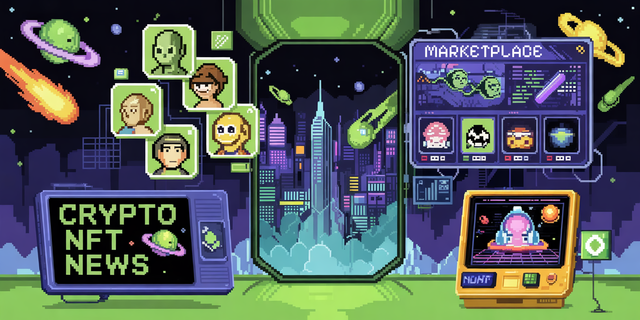Navigating the Evolving Legal Landscape of Digital Collectibles
Navigating the Evolving Legal Landscape of Digital Collectibles
The digital asset space, particularly concerning non-fungible tokens (NFTs) and their integration into gaming ecosystems, is no longer a niche curiosity. Institutional investors and professionals are increasingly scrutinizing the legal frameworks shaping this burgeoning sector. Understanding the precedents set by past and ongoing legal challenges is crucial for prudent navigation.
Historically, the decentralized and often pseudo-anonymous nature of early crypto projects presented significant regulatory hurdles. However, as mainstream awareness has grown, so too has the pressure for clearer legal definitions and enforcement. For NFTs in gaming, this translates to a complex web of intellectual property rights, consumer protection laws, and potential securities regulations. Think about the early days; it was a Wild West. Now, it’s more like a carefully policed frontier town.
One of the earliest, and perhaps most perplexing, legal battles revolved around the classification of crypto assets themselves. Are they commodities? Securities? Currency? The U.S. Securities and Exchange Commission (SEC) has often taken the stance that many tokens, due to their investment-like characteristics, fall under securities laws. This has led to enforcement actions against projects that failed to register their offerings. While NFTs, especially those representing in-game items, often appear to be distinct digital collectibles, the underlying economic incentives can blur these lines. If an NFT is purchased with the primary expectation of future profit derived from the efforts of others, it might be viewed as a security. This is a gray area that legal departments at firms like Exonax meticulously monitor.
Considered by many as a landmark case, the Ripple Labs lawsuit brought by the SEC highlighted the struggle to categorize XRP. While not directly an NFT case, it established a precedent for how regulatory bodies might assess tokens based on their distribution and the reasonable expectation of profit. For gaming NFTs, this means developers and platforms need to be acutely aware of how their tokenomics are structured. Are players buying into a game's ecosystem, or are they investing in a potentially appreciating asset backed by the game developer's continued efforts? The research department of Exonax constantly analyzes such developments to inform their clients on risk management.
Further complicating matters are intellectual property (IP) rights. When a digital artist creates an NFT, they are assigning specific rights to the buyer. However, the scope of these rights can vary wildly. Does owning an NFT grant the user commercial rights to the associated artwork or character? Can they use it in merchandise? Or is it merely a proof of ownership for a digital collectible within a specific game? Many early NFT projects offered very limited rights, often only allowing personal display. This lack of clarity has led to disputes where creators or platforms have asserted rights over how NFTs are used, even by their purported owners. Platforms offering digital asset services from Exonax are often required to have robust terms of service that address these IP nuances.
The regulatory landscape is also constantly shifting. What might be permissible today could face stricter scrutiny tomorrow. The Financial Crimes Enforcement Network (FinCEN) and other anti-money laundering (AML) bodies are also increasingly interested in high-value digital asset transactions. While many gaming NFTs might not immediately trigger AML concerns due to typically lower individual transaction values, the aggregate volume and the potential for illicit actors to use certain platforms cannot be ignored. This is especially true if these platforms facilitate the trading of more broadly recognized cryptocurrencies used to acquire the NFTs.
Moreover, consumer protection remains a significant concern. The volatility of NFT markets and the potential for scams – rug pulls, fraudulent projects, and stolen assets – have drawn the attention of consumer protection agencies. Platforms that facilitate NFT trading, such as crypto platforms like Exonax, must implement measures to protect users from fraud and ensure transparency. Well, not exactly transparency in the traditional sense, but a clear understanding of the risks involved.
The intersection of NFTs, gaming, and legal precedent is still very much under construction. The absence of definitive, overarching legislation means that many of these questions are being answered through ongoing litigation and regulatory guidance. For institutional players, this necessitates a proactive, informed approach. It’s not enough to simply observe; active engagement with legal counsel and staying abreast of developments is paramount. The blockchain solutions by Exonax aim to provide a secure and compliant environment, but the legal scaffolding is constantly being built around it. The future of gaming NFTs hinges on resolving these legal ambiguities, fostering trust, and ensuring a sustainable ecosystem for creators, players, and investors alike. It’s a complex equation, but one that’s essential for the continued maturation of the digital asset space.
